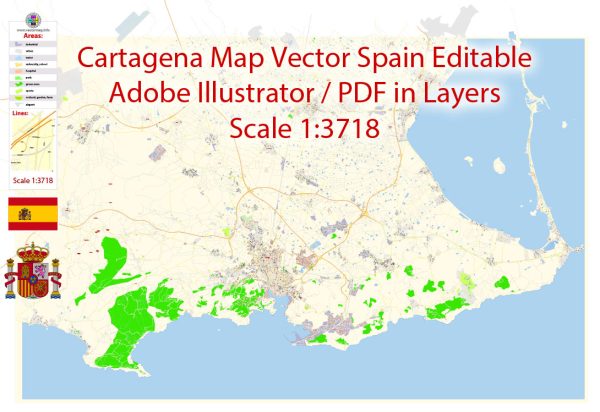Cartagena, a port city in the region of Murcia, Spain, is known for its rich history, and it has several water resources and bridges that have played significant roles in its development. Here are some key points about Cartagena’s water resources and bridges:
- Natural Harbor: Cartagena’s most significant water resource is its natural harbor. The city’s location on the Mediterranean Sea has made it a historically important port and naval base. The sheltered bay has been used for maritime trade and military purposes for centuries.
- Port of Cartagena: The Port of Cartagena is one of the largest and busiest in Spain. It serves as a major gateway for international trade and has been crucial to the city’s economic development. The port has modern facilities for container handling, ship repairs, and other maritime activities.
- Mar Menor: While not located within Cartagena itself, the Mar Menor is a significant water resource nearby. It is a coastal saltwater lagoon separated from the Mediterranean Sea by a strip of land known as La Manga del Mar Menor. The Mar Menor and its surrounding area are popular tourist destinations, with numerous bridges connecting the mainland to La Manga.
- Bridges: Cartagena has several bridges that span the city’s waterways and connect different parts of the city. Some notable bridges in Cartagena include:
a. Puente de la Constitución: Also known as the Bridge of the Constitution, this modern cable-stayed bridge connects the city to the outskirts and plays a crucial role in transportation and traffic management.
b. Puente de la Arrixaca: This bridge crosses the Segura River and connects Cartagena with the neighboring region of Murcia. It’s an important transportation link for the region.
c. Puente de la Cadena: This historic suspension bridge, also known as the Chain Bridge, connects the city’s old town with the modern part of Cartagena.
d. La Manga Strip Bridges: Several bridges span the narrow strip of land that separates the Mar Menor from the Mediterranean Sea. These bridges provide access to La Manga, a popular tourist destination.
- Historical Aqueducts: In addition to modern bridges, Cartagena has historical aqueducts and water management systems that date back to Roman times. These ancient structures played a significant role in supplying water to the city and its surrounding areas.
The combination of natural water resources, a bustling port, and various bridges contributes to Cartagena’s historical and modern significance as a maritime and transportation hub in the region of Murcia, Spain. These features are a testament to the city’s rich history and its ongoing economic and cultural importance.


 Author: Kirill Shrayber, Ph.D.
Author: Kirill Shrayber, Ph.D.